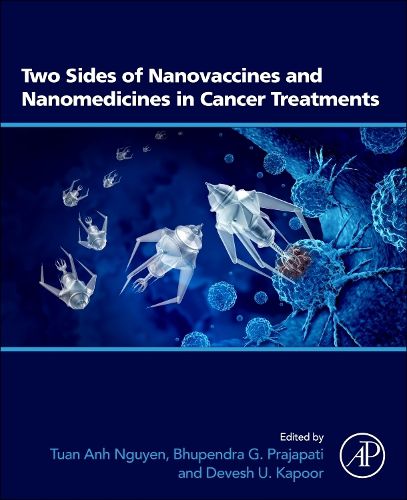Readings Newsletter
Become a Readings Member to make your shopping experience even easier.
Sign in or sign up for free!
You’re not far away from qualifying for FREE standard shipping within Australia
You’ve qualified for FREE standard shipping within Australia
The cart is loading…






Two Sides of Nanovaccines and Nanomedicines in Cancer Treatments provides a balanced exploration of the dual roles of nanotechnologies in oncology. Structured in four parts, the book begins with foundational knowledge of nanovaccines and nanomedicines, detailing their applications in cancer care and highlighting their precision in targeting cancer cells while reducing systemic toxicity. Importantly, the book addresses potential drawbacks, discussing side effects and safety concerns associated with these innovations. The final section emphasizes ethical, regulatory, and safety challenges, underscoring the need for careful oversight as nanotechnologies advance. For the academic audience, this book serves as a vital resource, offering insights that equip researchers and healthcare professionals to make informed decisions regarding clinical applications. Its focus on both the benefits and risks, alongside forward-looking perspectives, ensures that readers are well-prepared for future developments in the field of nanomedicine and cancer therapy.
$9.00 standard shipping within Australia
FREE standard shipping within Australia for orders over $100.00
Express & International shipping calculated at checkout
Stock availability can be subject to change without notice. We recommend calling the shop or contacting our online team to check availability of low stock items. Please see our Shopping Online page for more details.
Two Sides of Nanovaccines and Nanomedicines in Cancer Treatments provides a balanced exploration of the dual roles of nanotechnologies in oncology. Structured in four parts, the book begins with foundational knowledge of nanovaccines and nanomedicines, detailing their applications in cancer care and highlighting their precision in targeting cancer cells while reducing systemic toxicity. Importantly, the book addresses potential drawbacks, discussing side effects and safety concerns associated with these innovations. The final section emphasizes ethical, regulatory, and safety challenges, underscoring the need for careful oversight as nanotechnologies advance. For the academic audience, this book serves as a vital resource, offering insights that equip researchers and healthcare professionals to make informed decisions regarding clinical applications. Its focus on both the benefits and risks, alongside forward-looking perspectives, ensures that readers are well-prepared for future developments in the field of nanomedicine and cancer therapy.